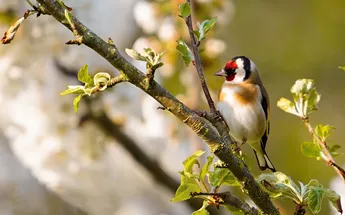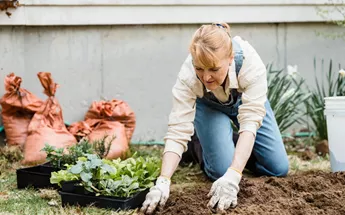As the temperature rises we need to be well prepared to keep cool and look after ourselves to prevent heat exhaustion and other heat-related illnesses. Just like us, wildlife such as birds, bees, butterflies and hedgehogs also needs to keep cool in the increasing heat. This blog explores ways to protect and support wildlife in the hot climate.
Provide a water source
Water is extremely important for wildlife, particularly during a heatwave. You can help provide water sources in your garden by filling a shallow bowl of water and topping up bird baths as birds like to bathe on hot days and wash their feathers. Providing a water bowl on the ground can help small animals such as hedgehogs. Remember to regularly wash out any water bowls to prevent the spread of diseases. To find out more about providing water for wildlife, The Wildlife Trust has a useful guide about providing water for wildlife, which also includes how to make a ‘puddling station’ for butterflies.
Create sheltered spaces
Birds and animals like to shelter in hot weather, often lying in the shade. You can create natural habitats with trees, shrubs and vegetation. These areas will allow wildlife to rest and cool down to prevent overheating. These shaded havens offer the ideal resting place for birds, bees, and butterflies to rest and find relief from the heat.
Here are a few ideas of other shelters you can create for your garden:
- Bird house
- Hedgehog house
- Bat box
- Frog and toad house
- Bee hotel
- Bug hotel
- Butterfly garden
- Mini pond
Many of these can be made from materials in your home or garden, check out these guides to learn how you can turn your garden into a sanctuary for wildlife.

Did you know?
Birds like to sunbathe! You may spot a bird laying on the ground with its wings outstretched and worry that it is in danger, but actually, it is just sunbathing. They tend to do this as part of their feather maintenance and is most common amongst blackbirds, and robins.
Food sources
Birds
Bird feeders are a fantastic way to offer sustenance and support to our feathered friends during times of heat stress. By filling feeders with bird seed or fat balls, you can provide an accessible and reliable food source for birds in your vicinity. Place the feeders in shaded areas to ensure the food remains fresh and inviting. Read the RSPB’s guide on how to choose the right bird feeder.
Bees and Butterflies
Bees and butterflies play a vital role as pollinators, contributing to biodiversity in the fertilisation and production of plants. Consider growing nectar-rich flowers in your garden or outdoor spaces to help these wonderful creatures. Flowers such as lavender, salvia, coneflower, and butterfly bush are renowned for their rich nectar and attractive qualities. These plants provide a much-needed energy source for bees and butterflies, which aids their well-being amidst rising temperatures.
There are lots of things we can do to protect wildlife in the summer, the RSPB charity does some wonderful work and has lots of useful resources that will help you turn your garden or outdoor space into a wonderful haven for wildlife, as part of their Nature on Your Doorstep campaign.
What next?
A guide to encouraging wildlife in your garden
No matter how big or how small your garden is, you can do your bit to encourage and help the wildlife around you.
Encourage bees into your garden
Bees play a vital role in pollinating plants, helping them to produce fruits, vegetables, and seeds. Without bees, our gardens and crops would struggle to survive, so it's important to encourage them into our gardens whenever possible.
A beginners guide to gardening
Whether you have a small balcony or a large space, gardening can be a relaxing and rewarding hobby. It is the perfect way to connect with nature and truly reap what you sow.


